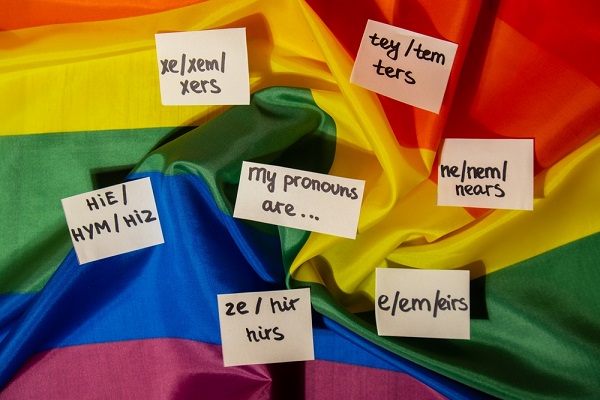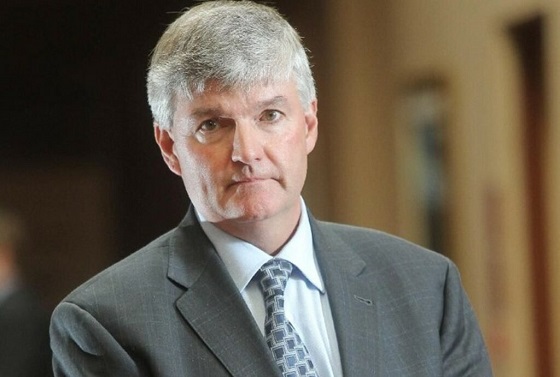Alberta
Did you win? Cash and Cars Lottery winners released today.

The names of all prize winners will be listed on the Cash and Cars Lottery website at cashandcarslottery.ca beginning today.
Cash and Cars Lottery Draws
Alberta (October 22, 2019)- “It’s donating with a chance to win, so it’s a win-win”.
That’s how Lawrence Chang of Leduc described his win when told his lucky ticket number 700737009 had just won him the Alberta Cancer Foundation You Win 50 draw. His half was $900,000 cash.
Anica Hicks of Calgary had a similar comment when told that she had just won the third grand prize in the Alberta Cancer Foundation Cash and Cars Lottery. She had the choice of a $270,000 annuity of $4,500 a month for 60 months or $250,000 cash. She decided to take the $250,000 cash.
“It’s important to give back to charity, so we buy tickets for all the lotteries,” she said. Her winning ticket number was 302164004.
Winners for the Cash and Cars Lottery 2,675 prizes worth $3.8 million and the You Win 50 were drawn in Calgary today.
 A lucky Edmonton man won the lottery’s first grand prize package that includes a Kimberley Homes furnished show home in Edmonton, a 2019 Honda Civic Hatch Sport CVT and $10,000 cash. Joseph Andrews was holding ticket number 106617001. His prize is worth more than $1 million.
A lucky Edmonton man won the lottery’s first grand prize package that includes a Kimberley Homes furnished show home in Edmonton, a 2019 Honda Civic Hatch Sport CVT and $10,000 cash. Joseph Andrews was holding ticket number 106617001. His prize is worth more than $1 million.
 A Brooks man is now the recipient of the lottery’s second grand prize package in Calgary. Lyle Conners now owns a Truman furnished Brownstone in Calgary’s University District, a 2019 Honda CRV LX AWD and $10,000 cash, all worth a total of more than $800,000. Mr. Connors was holding lucky ticket number 207280001.
A Brooks man is now the recipient of the lottery’s second grand prize package in Calgary. Lyle Conners now owns a Truman furnished Brownstone in Calgary’s University District, a 2019 Honda CRV LX AWD and $10,000 cash, all worth a total of more than $800,000. Mr. Connors was holding lucky ticket number 207280001.
The annual lottery supports the Alberta Cancer Foundation, which is the official fundraising partner for all 17 Alberta Health Services cancer centres in the province, including the Tom Baker Cancer Centre in Calgary and the Cross Cancer Institute in Edmonton. Funds raised from the lottery allow the Alberta Cancer Foundation to strategically invest in breakthrough cancer research, clinical trials and enhanced care initiatives at all cancer centres in the province. The lottery makes life better for Albertans and their families facing cancer.
Other major lottery winners are:
- 2019 BMW X3 xDrive 30i -JUNE OLESKY of Calgary Ticket #205511002
- 2019 Infinity QX60 -CORI WILLIAMS of Spruce Grove Ticket #402203003
- 2019 Ram 1500 Tradesman Crew Cab 4X4 -GARRY HOLMEN of Bentley Ticket #400284009 (Garry and Denise have been buying a ticket every year since 2007. She is a cancer survivor).
- 2019 Hyundai Santa Fe Ultimate 2.0T AWD-DAVID MCGARRY of Redcliff Ticket #102898001
- 2019 Mini Cooper Countryman All4-RYAN AND JACKIE GARDNER of Peace River Ticket #111805001
- 2019 Toyota RAV4 XLE-BRIAN AHORNER of Airdrie Ticket #400374008 (He says he buys tickets every year to help the foundation. He has family members who passed away with cancer.)
- 2019 Acura ILX Premium -CAROL BEAUPRE of Edmonton Ticket #303020002 (She says she always buys tickets to support the foundation and says she knows a number of people impacted by cancer, including her mother. She said she was thrilled to win. It made her year.)
The names of all prize winners will be listed on the Cash and Cars Lottery website at cashandcarslottery.ca beginning today.
Alberta
Alberta government should create flat 8% personal and business income tax rate in Alberta

From the Fraser Institute
By Tegan Hill
If the Smith government reversed the 2015 personal income tax rate increases and instituted a flat 8 per cent tax rate, it would help restore Alberta’s position as one of the lowest tax jurisdictions in North America
Over the past decade, Alberta has gone from one of the most competitive tax jurisdictions in North America to one of the least competitive. And while the Smith government has promised to create a new 8 per cent tax bracket on personal income below $60,000, it simply isn’t enough to restore Alberta’s tax competitiveness. Instead, the government should institute a flat 8 per cent personal and business income tax rate.
Back in 2014, Alberta had a single 10 per cent personal and business income tax rate. As a result, it had the lowest top combined (federal and provincial/state) personal income tax rate and business income tax rate in North America. This was a powerful advantage that made Alberta an attractive place to start a business, work and invest.
In 2015, however, the provincial NDP government replaced the single personal income tax rate of 10 percent with a five-bracket system including a top rate of 15 per cent, so today Alberta has the 10th-highest personal income tax rate in North America. The government also increased Alberta’s 10 per cent business income tax rate to 12 per cent (although in 2019 the Kenney government began reducing the rate to today’s 8 per cent).
If the Smith government reversed the 2015 personal income tax rate increases and instituted a flat 8 per cent tax rate, it would help restore Alberta’s position as one of the lowest tax jurisdictions in North America, all while saving Alberta taxpayers $1,573 (on average) annually.
And a truly integrated flat tax system would not only apply a uniform tax 8 per cent rate to all sources of income (including personal and business), it would eliminate tax credits, deductions and exemptions, which reduce the cost of investments in certain areas, increasing the relative cost of investment in others. As a result, resources may go to areas where they are not most productive, leading to a less efficient allocation of resources than if these tax incentives did not exist.
Put differently, tax incentives can artificially change the relative attractiveness of goods and services leading to sub-optimal allocation. A flat tax system would not only improve tax efficiency by reducing these tax-based economic distortions, it would also reduce administration costs (expenses incurred by governments due to tax collection and enforcement regulations) and compliance costs (expenses incurred by individuals and businesses to comply with tax regulations).
Finally, a flat tax system would also help avoid negative incentives that come with a progressive marginal tax system. Currently, Albertans are taxed at higher rates as their income increases, which can discourage additional work, savings and investment. A flat tax system would maintain “progressivity” as the proportion of taxes paid would still increase with income, but minimize the disincentive to work more and earn more (increasing savings and investment) because Albertans would face the same tax rate regardless of how their income increases. In sum, flat tax systems encourage stronger economic growth, higher tax revenues and a more robust economy.
To stimulate strong economic growth and leave more money in the pockets of Albertans, the Smith government should go beyond its current commitment to create a new tax bracket on income under $60,000 and institute a flat 8 per cent personal and business income tax rate.
Author:
Alberta
Province to stop municipalities overcharging on utility bills

Making utility bills more affordableAlberta’s government is taking action to protect Alberta’s ratepayers by introducing legislation to lower and stabilize local access fees. Affordability is a top priority for Alberta’s government, with the cost of utilities being a large focus. By introducing legislation to help reduce the cost of utility bills, the government is continuing to follow through on its commitment to make life more affordable for Albertans. This is in addition to the new short-term measures to prevent spikes in electricity prices and will help ensure long-term affordability for Albertans’ basic household expenses.
Local access fees are functioning as a regressive municipal tax that consumers pay on their utility bills. It is unacceptable for municipalities to be raking in hundreds of millions in surplus revenue off the backs of Alberta’s ratepayers and cause their utility bills to be unpredictable costs by tying their fees to a variable rate. Calgarians paid $240 in local access fees on average in 2023, compared to the $75 on average in Edmonton, thanks to Calgary’s formula relying on a variable rate. This led to $186 million more in fees being collected by the City of Calgary than expected.
To protect Alberta’s ratepayers, the Government of Alberta is introducing the Utilities Affordability Statutes Amendment Act, 2024. If passed, this legislation would promote long-term affordability and predictability for utility bills by prohibiting the use of variable rates when calculating municipalities’ local access fees. Variable rates are highly volatile, which results in wildly fluctuating electricity bills. When municipalities use this rate to calculate their local access fees, it results in higher bills for Albertans and less certainty in families’ budgets. These proposed changes would standardize how municipal fees are calculated across the province, and align with most municipalities’ current formulas.
If passed, the Utilities Affordability Statutes Amendment Act, 2024 would prevent municipalities from attempting to take advantage of Alberta’s ratepayers in the future. It would amend sections of the Electric Utilities Act and Gas Utilities Act to ensure that the Alberta Utilities Commission has stronger regulatory oversight on how these municipal fees are calculated and applied, ensuring Alberta ratepayer’s best interests are protected.
If passed, this legislation would also amend sections of the Alberta Utilities Commission Act, the Electric Utilities Act, Government Organizations Act and the Regulated Rate Option Stability Act to replace the terms “Regulated Rate Option”, “RRO”, and “Regulated Rate Provider” with “Rate of Last Resort” and “Rate of Last Resort Provider” as applicable. Quick facts
Related information |
-

 Brownstone Institute1 day ago
Brownstone Institute1 day agoDeborah Birx Gets Her Close-Up
-

 Alberta1 day ago
Alberta1 day agoCoutts Three verdict: A warning to protestors who act as liaison with police
-

 Business2 days ago
Business2 days agoTrudeau gov’t pledges $42 million to the CBC to promote ‘independent journalism’
-

 Justice2 days ago
Justice2 days agoOntario Court of Justice says participants must state their ‘preferred pronouns’ during introduction
-

 Alberta2 days ago
Alberta2 days agoMaxime Bernier says it’s ‘astounding’ Alberta is ‘pushing’ COVID boosters, tells Danielle Smith to stop it
-

 Business2 days ago
Business2 days agoCanada’s economy has stagnated despite Ottawa’s spin
-

 Alberta1 day ago
Alberta1 day agoAlberta moves to protect Edmonton park from Trudeau government’s ‘diversity’ plan
-

 Energy1 day ago
Energy1 day agoCanada Has All the Elements to be a Winner in Global Energy — Now Let’s Do It








